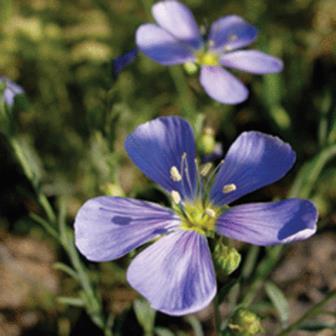报春花属自然杂交或致耐寒基因转移
来源:《植物学纪事》
作者:马永鹏等
时间:2014-05-12

记者从中科院昆明植物研究所获悉,该所孙卫邦研究组的博士马永鹏日前与丽江高山植物园的博士吴之坤合作,发现报春花属植物自然杂交或致耐寒基因转移。相关研究成果日前在线发表于《植物学纪事》。
据马永鹏介绍,报春花属约有500种,是报春花科中观赏价值极高的一个大属,主要分布于北半球温带和高山地区,仅有极少数种类分布于南半球。我国有报春花属300多种,主要分布于东喜马拉雅—横断山区域,该区域被认为是报春花属植物的起源与分布中心。
“我们研究了分布于丽江玉龙雪山的橘红灯台报春、霞红灯台报春及其自然杂交形成的杂交后代,通过野外实验确定了两种亲本的繁殖生物学特征和传粉者。同时,通过实施大量野外实验排列与室内的分子生物学手段,揭示了该杂交过程和杂交方向。”马永鹏说,研究显示,该杂交过程是一个单向杂交,总是以橘红灯台报春为母本,所有检测到的杂交后代都是一些和橘红灯台报春的回交后代。同时,野外的杂交后代存在较高的坐果率和结实率。
研究人员认为,由于该杂交区内亲本与杂交后代进行不断地回交,有些橘红灯台报春已经成功地占据了霞红灯台报春典型的生态位。在这种情况下,通过杂交,很可能使霞红灯台报春中一些耐旱的基因转移到了橘红灯台报春中。(来源:中国科学报 张雯雯)
Unidirectional hybridization and reproductive barriers between two heterostylous primrose species in north-west Yunnan, China
Abstract Background and Aims Heteromorphy in flowers has a profound effect on breeding patterns within a species, but little is known about how it affects reproductive barriers between species. The heterostylous genus Primula is very diverse in the Himalaya region, but hybrids there have been little researched. This study examines in detail a natural hybrid zone between P. beesiana and P. bulleyana.
Methods Chloroplast sequencing, AFLP (amplified fragment length polymorphism) markers and morphological comparisons were employed to characterize putative hybrids in the field, using synthetic F1s from hand pollination as controls. Pollinator visits to parent species and hybrids were observed in the field. Hand pollinations were conducted to compare pollen tube growth, seed production and seed viability for crosses involving different morphs, species and directions of crossing.
Key Results Molecular data revealed all hybrid derivatives examined to be backcrosses of first or later generations towards P. bulleyana: all had the chloroplast DNA (cpDNA) of this species. Some individuals had morphological traits suggesting they were hybrids, but they were genetically similar to P. bulleyana; they might have been advanced generation backcrosses. Viable F1s could not be produced with P. bulleyana pollen on P. beesiana females, irrespective of the flower morphs used. Within-morph crosses for each species had very low (<10 %) seed viability, whereas crosses between pin P. bulleyana (female) and pin P. beesiana had a higher seed viability of 30 %. Thus genetic incompatibility mechanisms back up mechanical barriers to within-morph crosses in each species, but are not the same between the two species. The two species share their main pollinators, and pollinators were observed to fly between P. bulleyana and hybrids, suggesting that pollinator behaviour may not be an important isolating factor.
Conclusions Hybridization is strongly asymmetric, with P. bulleyana the only possible mother and all detected hybrids being backcrosses in this direction. Partial ecological isolation and inhibition of heterospecific pollen, and possibly complete barriers to F1 formation on P. beesiana, may be enough to make F1 formation very rare in these species. Therefore, with no F1 detected, this hybrid zone may have a finite life span as successive generations become more similar to P. bulleyana.
原文链接:http://aob.oxfordjournals.org/content/113/5/i.full.pdf+html




